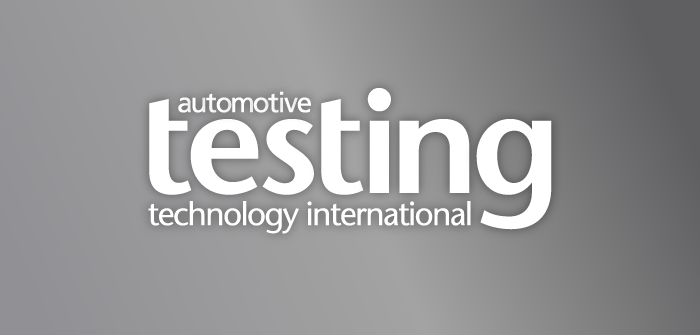R&D engineers at Hyster are able to collect, process and report on 95% of all test data during physical analysis using HBM test and measurement systems
The Hyster-Yale Group factory near the canal harbors in Nijmegen, Netherlands, manufactures Hyster heavy forklift trucks on two production lines. These trucks have been designed for lifting and moving heavy loads weighing from 8-52 metric tons. Continuous development of new models focuses on improvements in payload, lifting height, lifting speed, energy consumption, maintenance-friendliness and safety. HBM supplies HYG with measuring sensors and data acquisition equipment for monitoring practical and endurance tests.
Product development is continually adapted in line with clients’ changing preferences, new working methods, new technology and new regulations. Every new model is developed in a full CAD/CAM environment and tested using simulation. The extent to which a new model can differ from existing ones varies. It can be partly based on an existing model, with improvements to a number of crucial parts, or an almost entirely new model can be developed.
Mark Janssen, reliability test leader at Hyster, says, “We aim for zero defects during production. That is why the entire process of product development, engineering and testing is precisely defined. If faults creep into the development process, costs can rise rapidly. That’s all right in the engineering phase, but the cost of correcting design faults we discover in the prototype before the practical tests can increase to a considerable level.”
Prototype stage
A first prototype is built once the virtual design of a new model is complete and is 95% ready for production. Extensive physical testing then takes place. The forklift undergoes clearly-defined test cycles in order to validate the design, test the construction and the parts, and measure its performance.
“We set very high requirements for the forklift trucks because they are used in industrial environments for especially tough work,” explains test engineer Rob van den Brink. “Our latest prototype can lift two stacked sea containers. Aspects such as ride characteristics, turning circles, stability and lifting capacity are studied in simulations during the design phase. The practical tests are of crucial importance in examining the behavior of the forklifts in the physical working environment. We look there at aspects such as useful life, reliability (i.e. the number of hours a truck can be used problem free), sturdiness and maintenance-friendliness.
“The number of tests a truck and its components are subjected to is huge. We test axles, exhaust systems and tire wear. We perform braking tests when laden, and hose tests for the hydraulic system. Laden forklifts are placed on tilting platforms in order to determine the longitudinal and lateral stability of the load and the counterweight on sloping surfaces. The mast, including the hydraulic system, undergoes endurance testing in a special test rig on-site and, furthermore, trucks are subjected to loads in excess of their actual capacity.
“Additional safety measures are taken in this instance, of course. We also look at the effect of environmental factors such as dust production and temperature, which can affect engine performance and the viscosity of the oil in the hydraulic system.”
Test and measuring equipment
HBM has supplied test and measuring equipment to the Hyster-Yale Group for years. This includes strain gauges for measuring the loads on chassis and masts. Hyster also uses various Somat and QuantumX data acquisition systems from HBM, which are used for acquiring and processing a large quantity of data. HBM nCode software is used to process and analyze the measurement data.
Van den Brink says, “HBM measurement amplifiers are compatible with virtually all measuring sensors and measurement equipment from other suppliers. We connect not only strain gauges, but also laser sensors, load cells for measuring tensile forces, and angle sensors and displacement sensors for measuring the height and position of the mast. We also monitor fuel consumption, the oil pressure in the hydraulic system, operation and the steering system, and we collect GPS data.
“With the Somat eDAQlite we can collect, process and report on 95% of all the test data during the practical tests. The eDAQlite is IP certified, which means it is extremely sturdy, and furthermore it is a small, handy box that is highly suitable for building into test models. It takes the measurement data from the sensors and communicates with the forklift truck’s CANbus controller for all forklift truck data. We store the data in a datalogger, or send it via a wireless modem to a notebook at the test site, or directly to a PC in Nijmegen. The data link is very reliable, so we can even send the measuring equipment to clients in the USA for carrying out endurance and practical tests there.”
Janssen adds, “We deliberately use all the facilities for testing and measuring. In this way, R&D receives enormous amounts of data to validate the design and to monitor performance in practice. If we need information from an R&D point of view, we collect it in any way we can. We even take systems from forklifts apart, including items such as engines and hydraulic and braking systems, to see how they have lasted the tests and how wear has developed. If we wish to develop a new model for a client, we can use the client data for developing new applications, and the data will help us in simulating the correct test conditions.”
March 6, 2017


